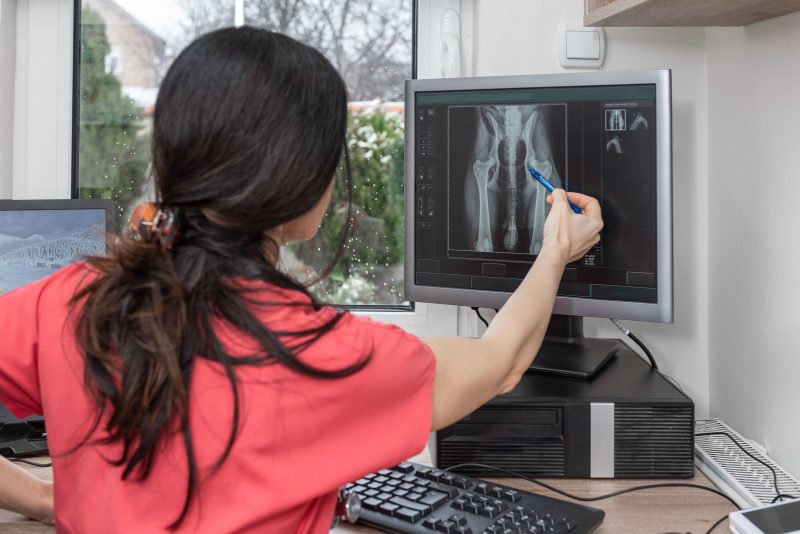
Hip dysplasia in dogs is a frequently diagnosed problem, and is one pet owners should be aware of. Keep reading to learn what you need to know about hip problems in dogs.
The Hip Joint is Connected to the…
The hip joint is actually a pretty amazing joint. Made up of the pelvis and femur, the coxofemoral joint is a ball and socket set up, which gives it an amazing range of motion. The joint is padded with cartilage that is kept lubricated with synovial fluid. There is a ligament within the joint itself, and a joint capsule around the whole apparatus. When it’s working well, it is pretty incredible. But there are also a lot of ways for things to go awry.
Hip Problems in Dogs
The hip is subject to any problem any other joint is- from traumatic injuries like fractures and dislocations to congenital problems like cartilage defects, hip problems in dogs are not uncommon.
Perhaps the most known of the hip issues is hip dysplasia in dogs. Canine hip dysplasia refers to the abnormal development of one or both hip joints. There are likely multiple factors that contribute to this occurrence, such as nutrition and genetics. Large breed dogs including German shepherds, labradors, bulldogs, and rottweilers seem to be at highest risk.
When the hip joint is not properly formed, it leads to looseness of the joint and instability. Eventually, this can cause pain and lead to further damage through the development of osteoarthritis.
Early on, dogs affected by hip dysplasia may not show any symptoms. Eventually, however, most exhibit some degree of:
- Bunny hopping
- Reluctance to rise or jump
- Lameness/limping
- Decreased muscle tone
- Lowered exercise tolerance
- Pain
What to Do About Hip Dysplasia
If hip dysplasia is suspected, it can usually be diagnosed by taking hip radiographs (X-rays). Thankfully, though, there are some things that you can do as a pet owner to prevent hip dysplasia in dogs from developing altogether.
You can help by selecting puppies with lower genetic risk, and feeding them for healthy growth. This includes:
- Looking into your pet’s risk based on their breed
- Being sure that your puppy’s parents have been screened for hip dysplasia
- Choosing a breeder who evaluates for hip dysplasia in their breeding lines
- Feeding large breed puppies a diet formulated to support large breed growth
- Not allowing your puppy to free feed
- Avoiding supplementing a balanced diet with additional vitamins or protein
- Discussing the best time to spay or neuter with our veterinary team
When hip dysplasia does occur, though, we can often keep affected pets functional and comfortable through pain management and strengthening. At Brownswitch Pet Hospital, we are here to help no matter the situation.
